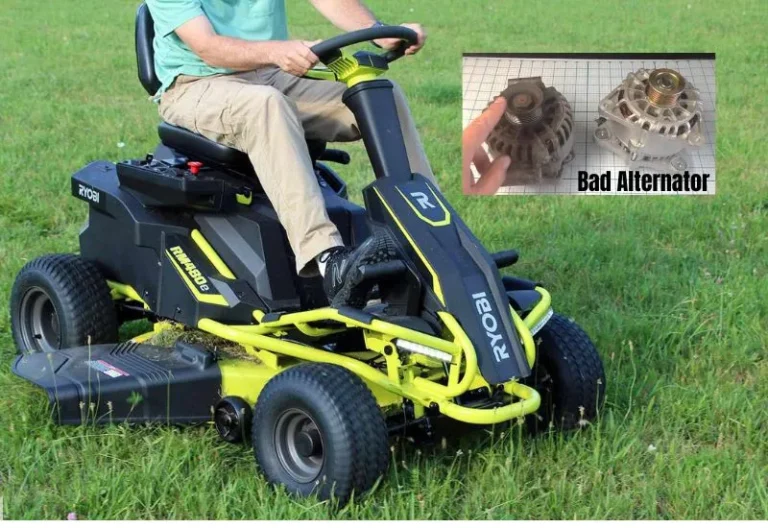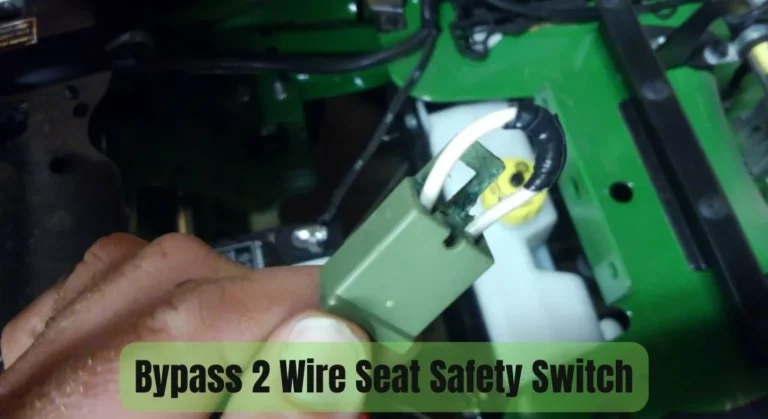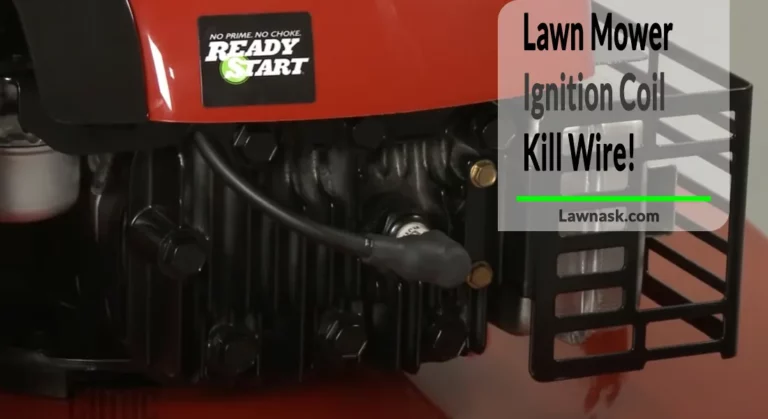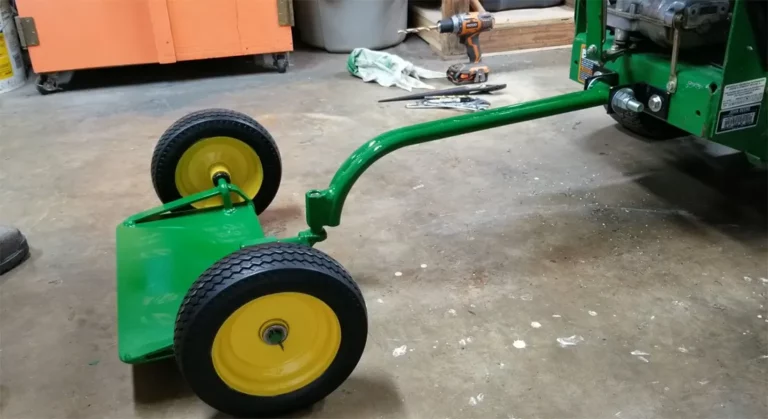What is the Gap Between Ignition Coil and Flywheel
Gardening and lawn care enthusiasts know the importance of a properly functioning lawn mower. Among the various components that contribute to a mower’s performance, the ignition coil and flywheel play a critical role.
However, one often overlooked aspect is the gap between the ignition coil and flywheel.
Most mowers require a gap of around 0.020 to 0.040 inches (0.5 to 1.0 mm).
This article will explore the significance of this gap, its impact on mower efficiency, what is the gap between ignition coil and flywheel, and the steps to ensure proper alignment.
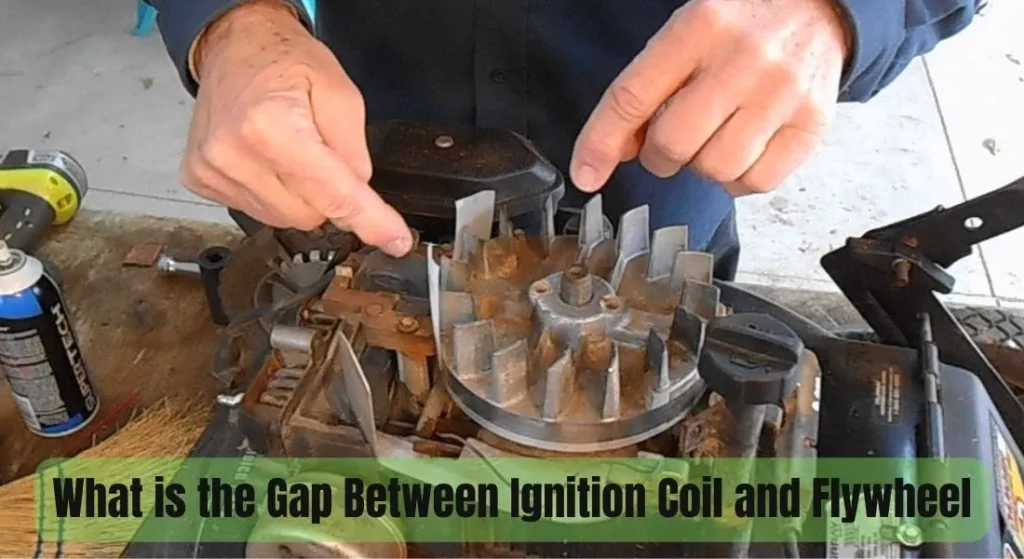
Understanding the Gap Between Ignition Coil and Flywheel
Before you begin to know about the gap, you need to know about the ignition coil and the flywheel. The ignition coil and the flywheel are the key components for optimal lawn mower performance.
At the heart of the ignition system lays the ignition coil, a vital component responsible for producing the high-voltage electrical spark needed to ignite the fuel-air mixture in the engine’s combustion chamber. This controlled spark is essential for starting the engine and ensuring it runs smoothly and consistently.
Connected to the engine’s ignition coil, the flywheel is a heavy, disc-like component designed to store and regulate energy during the engine’s operation. Its primary function is to maintain the engine’s momentum and balance rotational forces.
Both of them work together as the flywheel is connected to the engine’s ignition system, stores energy, and helps maintain the engine’s momentum.

The importance of Gap alignment:
The gap between the ignition coil and flywheel is vital for efficient engine operation. A proper alignment ensures that the spark generated by the ignition coil occurs at the precise moment when the flywheel’s magnets pass by.
This synchronized timing guarantees optimal combustion, resulting in improved engine performance, fuel efficiency, and overall mower functionality.
Related Post: Everything You Need To Know About Lawn Mower Ignition Coil Kill Wire!
Effects of an Improper Gap Between Ignition Coil and Flywheel
In this section, the discussion will be on the effects of an improper gap between ignition coil and flywheel:
1. Reduced Power Output
When the gap is either too wide or too narrow, it can lead to a weaker spark or spark misfire. This can result in a decrease in the power output of the mower’s engine.
As a consequence, the mower may struggle to effectively cut through thick grass or challenging terrain, leading to subpar performance.
2. Increased Fuel Consumption
An inefficient gap alignment can disrupt the combustion process within the engine. If the spark occurs at the wrong moment or is not strong enough, the fuel-air mixture may not burn efficiently.
This inefficiency can lead to increased fuel consumption, as the engine requires more fuel to compensate for the incomplete combustion. Not only does this translate into higher operating costs for the mower owner, but it also contributes to environmental pollution due to increased emissions.
3. Engine Misfires and Starting Issues
An improper gap alignment can lead to engine misfires, where the spark fails to ignite the fuel-air mixture consistently. This results in a disruption in the engine’s firing sequence, causing it to run unevenly or even stall.
Moreover, during start-up, an incorrect gap can hinder the ignition process, making it difficult to start the engine altogether. This can be frustrating for users, necessitating troubleshooting and potential repairs.
4. Premature Component Wear
An incorrect gap alignment can cause excessive stress on the ignition coil, flywheel, and other related components. A gap that is too small can result in the spark jumping across a shorter distance, causing increased wear on the coil.
Conversely, a gap that is too wide can lead to a weaker spark, forcing the ignition system to work harder, potentially resulting in accelerated wear and reduced component lifespan.
5. Overall Engine Performance Issues
Inconsistent and inefficient combustion caused by an incorrect gap can manifest as a range of performance issues. The engine may exhibit rough idling, reduced acceleration, or a lack of responsiveness to throttle inputs.
These problems not only affect the mower’s cutting capabilities but also diminish the overall user experience and satisfaction.
Simply speaking, if the coil is too close to the flywheel, the coil will be damaged and coil output will suffer while the engine is running.
And if the ignition coil gap is too big, the ignition system won’t provide enough voltage to initiate the spark across the gap so misfires will occur. So it is really important to know what is the gap between ignition coil and the flywheel.
Ensuring the Gap Between Ignition Coil and Flywheel
To achieve optimal performance, it is essential to maintain the correct gap between the ignition coil and flywheel. Here are some steps to ensure proper alignment:
- Consult the Manufacturer’s Guidelines: Refer to the owner’s manual or the manufacturer’s instructions specific to your mower model. They typically provide the recommended gap measurement and any specific alignment instructions.
- Safety First: Before attempting any adjustments, ensure the mower is turned off and the spark plug wire is disconnected to prevent accidental starts.
- Measure and Adjust: Use a feeler gauge to measure the gap between the ignition coil and flywheel. If the gap is too large or too small, make adjustments accordingly. Most mowers require a gap of around 0.020 to 0.040 inches (0.5 to 1.0 mm) but always refer to the manufacturer’s specifications.
- Ensure Uniform Gap: While adjusting the gap, make sure it remains consistent around the entire circumference of the flywheel. Uneven gaps can lead to performance issues.
- Reassemble and Test: Once the gap is properly adjusted, reassemble the components, reconnect the spark plug wire, and test the mower to verify its performance. Observe for smooth operation and consistent power output.
It is important to regularly check for any safety recalls issued by the manufacturer and follow their instructions to address any potential issues.
Related Post: Bad Ignition Coil Symptoms Lawn Mower: 6 Fixes & Replacement Guide
Cost of adjusting the Gap Between Ignition Coil and Flywheel
The cost of setting the ignition coil gap on your gas trimmer is typically minimal. It primarily involves your time and effort to perform the adjustment. Feeler gauges, which are necessary for measuring the gap, are affordable and readily available at hardware stores or online retailers.
However, if you are uncomfortable or unsure about performing the adjustment yourself, you may choose to seek professional assistance. In such cases, the cost may vary depending on the service provider and your location. But usually, the cost wouldn’t be more than $40.
Although it’s worth noting that the adjustment process is generally straightforward and can be done by trimmer owners with basic mechanical skills.
What is the Gap between Ignition Coil and Flywheel – FAQs
What is the purpose of the gap between the ignition coil and flywheel in a lawn mower?
The gap between the ignition coil and flywheel is crucial for generating a spark at the right moment during the engine’s combustion cycle. The spark ignites the fuel-air mixture, enabling efficient combustion and optimal engine performance.
How do I know if the gap between the ignition coil and flywheel is incorrect?
Some common indicators of an incorrect gap include reduced power output, engine misfires, difficulties during start-up, and increased fuel consumption. If you notice any of these issues, it is advisable to inspect and adjust the gap.
How often should I check and adjust the gap between the ignition coil and the flywheel?
It is recommended to consult the owner’s manual or the manufacturer’s guidelines for specific maintenance intervals. In general, it is a good practice to check and adjust the gap during routine maintenance or whenever you notice performance issues.
Can I use any feeler gauge for measuring the gap?
It is recommended to use a feeler gauge that matches the specifications provided by the mower manufacturer.
What is the ideal gap between ignition coil and flywheel?
The ideal gap measurement can vary depending on the mower model and manufacturer’s specifications. Usually, it is 0.5 to 1mm.
Related Posts:
- How to Fix Common Issues with Lawn Mower Ignition Switches
- Troubleshooting Kohler Ignition Coil Problems: Step-by-Step Fixes
- All You Need to Know About the Lawn Mower Ignition Coil Kill Wire
- Easy Troubleshooting Steps for Cub Cadet Ignition Switch Problems
- Common Signs of a Faulty Ignition Coil in a Lawn Mower

